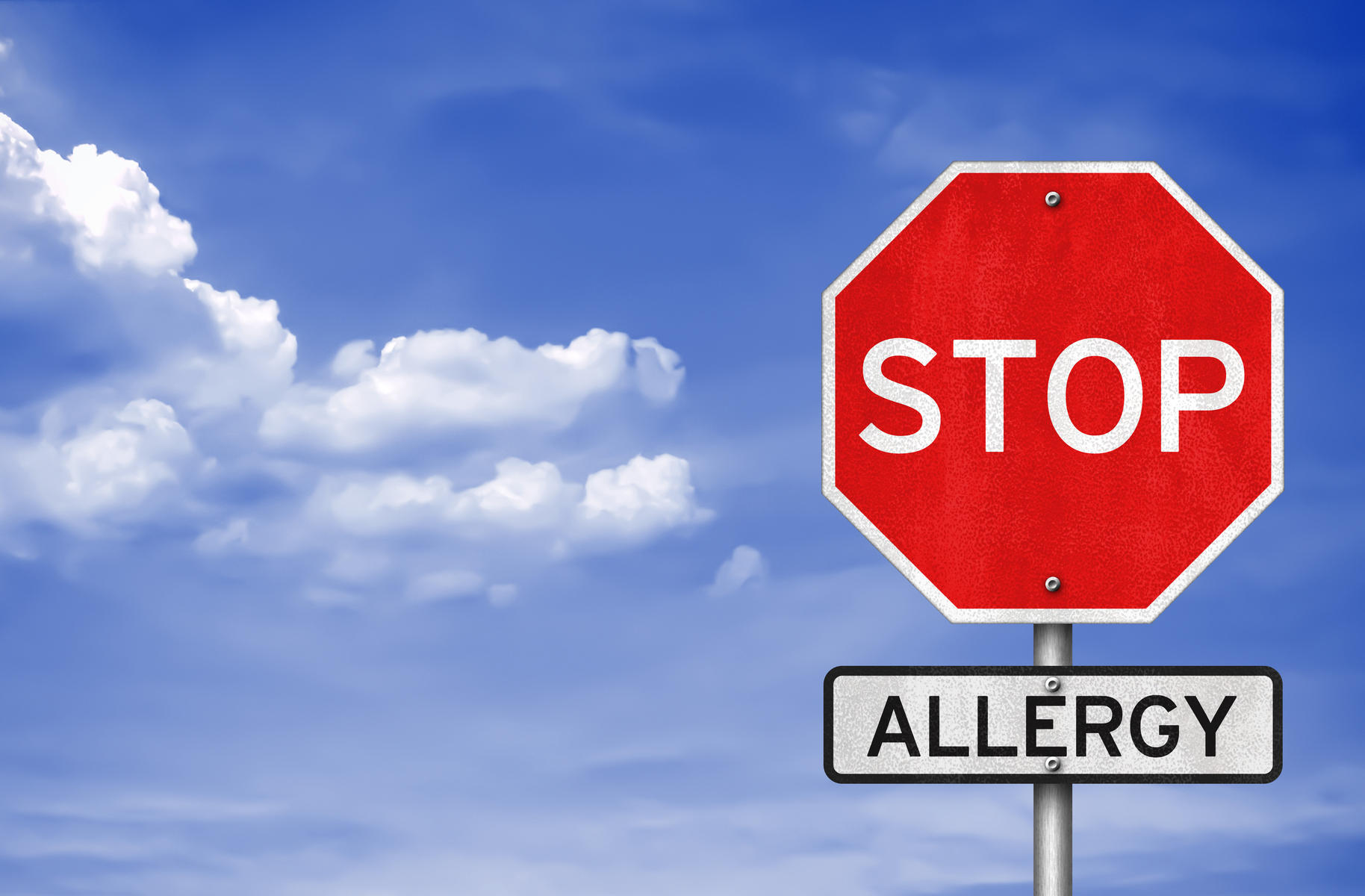
Dinners out, play dates, school events, camp buses, family vacations, and even a trip to Grandma's can feel scary because of possible exposure to a potentially life-threatening food. Here are 11 strategies to help parents and kids feel safe and in control in the face of food allergies.
1. Get Cooking
While working hard to avoid the things that are dangerous for your child, getting acquainted with ingredients that are safe is the most productive and empowering thing a parent can do in daily management of food allergies. The more familiar you are with ingredients, products, cooking methods, and substitutions, the more in control you'll feel when it comes to feeding your child well and making sure he doesn't feel alienated.
If you can involve your child in cooking, the practice will have the same effect on her. Master a handful of reliable recipes, riff on them safely to your tastes, and sit down to meals that everyone in the family can enjoy together without worry. Excellent cookbooks, magazines, and recipe databases dedicated to food allergies are available to help. Mainstream food publications and websites often include free-of foods for readers with sensitivities or allergies.
2. Find reliable sources of research, studies on food allergies, and recalls
To supplement conversations with your allergist or pediatrician, seek out ongoing updates from a short list of verifiable news outlets and websites whose purpose is to support the food allergy community. Bookmark these to start.
FARE, Food Allergy Research and Education, is a nonprofit organization aimed at improving the quality of life and health of people with food allergies. Its website offers webinars, research summaries, toolkits, details about laws and regulations, and more.
Kids With Food Allergies is a division of the Asthma and Allergy Foundation of America, a nonprofit that advocates and educates on behalf of food allergy families.
Clinicaltrials.gov is a service of the National Institutes of Health and allows public searches of research studies happening worldwide. It offers a glimpse into the work being done in the food allergy field. American Academy of Allergy, Asthma, and Immunology is a worldwide membership organization of allergists and immunologists. The website serves its members, but offers useful content and links for parents managing and learning about their children's food allergies.
3. Compile allergy awareness products and materials
Preparation goes a long way in keeping allergy anxiety at bay. Organize an allergy kit complete with an emergency response checklist, medications and instructions, and important phone numbers. Pack it in an easily recognizable bag, like this allergy medicine case from AllerMates, that you, your child, a caregiver, or teacher will remember to keep on hand. Personalized allergy alert labels, bracelets, and tags call attention to your child's needs and are available online from companies like Mabel's Labels.
Ask your allergist or pediatrician to print out a personalized emergency plan, or create one using FARE's Food Allergy and Anaphylaxis Emergency Care Plan. Food allergy awareness posters are available online and are perfect for classrooms, preschools, and daycare centers. Print one out to share with your child's teacher or caregiver. You can find several options here: FoodAllergyAwareness.org or AllergicLiving.com.
4. Tap into inclusive communities
Interact with other parents, caregivers, and children who are dealing with the same challenges. Communities online and in-person bring together families adjusting to life with food allergies. These people understand the ever-present hum of anxiety, and are simultaneously navigating package labels, cross-contamination concerns, school safety, epinephrine injector expenses, and all the issues you're worried about that allergy-free families are not. One person's quest to find answers for her own situation may prove applicable to your own, and helps prevent all parties from feeling isolated.
Get together with local peers or meet online through member forums like those at Kids With Food Allergies, Facebook pages like AllergyMom, or organizations and individuals on Twitter and Instagram (search #foodallergies). Compassionate, empathetic contacts near and far can be great resources for traveling with family, too in terms of finding reliable places to eat and other services that cater to food allergy families.
5. Find accommodating restaurants, resorts, and entertainment venues
When you are acutely anxious about your child's safety, going out for dinner or planning a family vacation can feel like more trouble than it's worth. Both require relinquishing a fair amount of control over preventative measures. But with food allergies on the rise, the service industry has responded in kind, helping allergic customers and families have a regular experience. Restaurant staffs are increasingly sensitive to the needs of food allergic patrons. It'll take some legwork to find local allergy-friendly restaurants (try Allergy Eats), but once you do, you can take a worry-free night off from the kitchen now and then.
Family-centered resorts are especially skilled at helping allergy families navigate safely. Walt Disney World stocks epinephrine auto injectors (EpiPen®) for guests throughout resorts and cruises, and note locations of the medication on guest maps. Other major family resorts like Hershey Park and The Great Wolf Lodge offer allergy-friendly menus and services, plus direct access to chefs and staff who will plan ahead for your family's arrival so everyone can relax and have fun with less worry. The Airline Access to Emergency Epinephrine Act of 2015 has been introduced, and if passed, will improve accommodations for passengers with at risk of food allergy-induced anaphylaxis.
Nationwide, baseball stadiums host peanut-free days when fans can enjoy a game in no peanut zones. Food-free entertainment destinations, like libraries, some playgrounds, and museums offer fun, learning, and play free from apprehension about allergen exposure.
6. Take opportunities to shape school policy
Teachers and administrators have a lot on their plates, so helpful parental involvement is often the best way to ensure that the complicated issue of food allergies gets the attention it warrants. Volunteering to provide snacks, or suggesting that all class snacks be fresh fruits and vegetables defines a safe guideline that's reasonable for all students. Collaborating with staff to write the school allergy policy, and heading up a committee to educate peers puts you in a position to design the parameters that will keep your child safe when you can't be there. Suggest rules that prevent food sharing in the lunchroom and that make classroom celebrations inclusive. Work with the school to create a 504 plan (available under civil rights law) or other emergency plan for your family, and offer to help inform fellow allergy families about the options that exist to protect their children. No one will be a more committed advocate for your child than you are.
7. Keep a stash of safe snacks
Most food allergy parents move about the world armed with safe snacks for their kids. The easiest choices are whole foods like fruits and vegetables. They harbor no hidden ingredients, they are portable, and often well liked by kids. They are the simplest suggestion for other adults when your child is in their care. In our snack food enthused world, it's great to know that brands like So Delicious, Enjoy Life, Namaste Foods, and many others manufacture allergen-free products that kids love. You'll find everything from cookies and granola bars, to ice cream and cheese puffs. Ingredient labels on any packaged foods (see below) will help determine if something is free of your child's allergens. Get more tips for building an allergy-safe pantry.
8. Rely on healthcare professionals that help
Allergists and pediatricians are parents' primary partners in the quest to keep kids with food allergies safe. Their experience and perspective, gained by managing thousands of allergy children, helps families adapt to limitations. Other practitioners who specialize in food allergy management and treatment, especially those who are immersed in emerging research and science can prove helpful, too. Nutritionists and dietitians identify deficiencies, introduce alternative products, and suggest approaches to dealing with especially limited diets of picky eaters or kids dodging a litany of allergens. Ask your allergist or food allergy community friends for a recommendation and request a consultation.
9. Understand packaging and ingredient information
Parents of kids with food allergies become voracious readers of food labels, one of the first lines of defense against accidental ingestion of an allergen. In the United States, the Food Allergy Labeling Consumer Protection Act (FALCPA) defines labeling requirements for all foods regulated by the Food and Drug Administration (FDA). It requires food labels declare any of the eight major food allergens (milk, egg, peanut, tree nut, wheat, soy, fish, and crustacean shellfish) as ingredients. Within the ingredient list, major allergens will be identified in parentheses following the common name used, for example flour (wheat), or whey (milk). Some labels include a voluntary "Contains" statement following the ingredient list, and calls out the major allergen in a short list (contains: milk, soy, egg). Labels may also include processing and manufacturing information, which highlights cross-contamination risk. Look for terms like "manufactured in a facility that also handles…", or "made on shared equipment with…".
10. Enlist supportive, informed family and friends
Family members and friends who understand the severity and risk of food allergies are invaluable. They can be an extra set of watchful eyes, preventing your child from taking unsafe snacks from a well-meaning friend at the playground, or from digging into the wrong treat at a play date. Help them help you. Teach them your child's allergens, the signs of a severe reaction, and how to use an epinephrine injector. Forward them articles like this one and other resources that offer tools for understanding food allergies and keeping allergy kids safe. Share a good recipe for allergy-friendly cupcakes if they've asked what they can make for the next birthday party. Tell them about great products at the grocery store that are safe for your child. And give them a hug for their extra efforts to be inclusive! As your child grows, his own friends can be equally instrumental in helping to keep him safe from life-threatening reactions to food if they understand and know what to do.
11. Look into treatment options
More experts and parents have embraced immunotherapy, which is the practice of exposing children to their food allergen to help manage symptoms. In fact, in September 2019, the Food and Drug Administration (FDA) announced support of an oral immunotherapy drug for peanut allergies produced by Aimmune Therapeutics, Inc. The drug, called PALFORZIA, is geared toward those aged 4-17, and it aims to help kids build tolerance to peanuts and lessen the severity of anaphylaxis and other allergy symptoms after exposure. The FDA should make a decision about PALFORZIA in early 2020—and if approved, would be the first FDA-approved drug aimed at peanut allergies.

